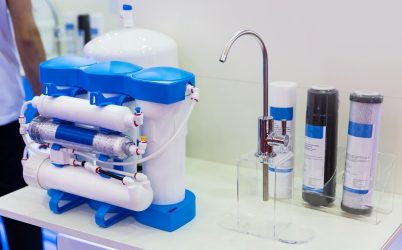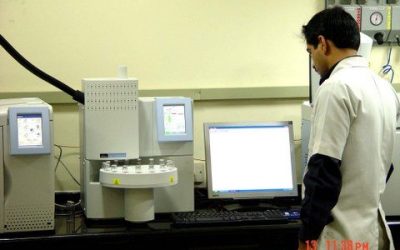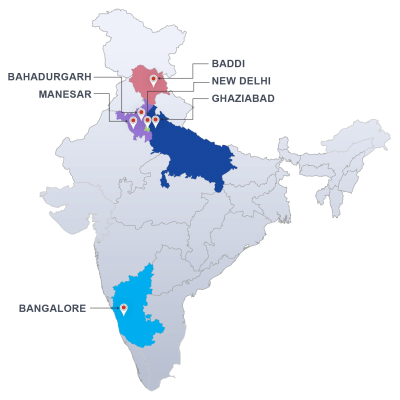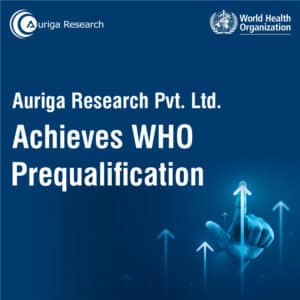A pharmacovigilance system is required by the Marketing Authorization Holder (MAH) to fulfil the pharmacovigilance tasks and responsibilities listed in national regulations, and is designed to monitor the safety of registered medicinal products and detect any change to their benefit-risk balance. Our PV system complies to Guidance Document for Marketing Authorization Holders of Pharmaceutical Products released on January 2018 by Indian Pharmacopoeia Commission, National Coordinating Centre-Pharmacovigilance Program of India in collaboration with Central Drug Standards Control under Ministry of Health & Family Welfare, Government of India.
Auriga PV Support system helps MAH in the following activities on behalf of MAH
- Maintenance of PV Safety database for Drug/Vaccine/Device
- Management of PV System Master File (PSMF/PvMF)
- ICSR Case Processing and Reporting
- Literature review and Surveillance
- Product Quality Complaints
- Handling Medical queries
- Periodic Aggregate Report Writing ( PSUR/DSUR/PBRER/PADER)
- Risk Management Plan
- SDEA Review and Execution
- Training of team including setting up required SOPs for PV activities
- Pharmacovigilance Audit
- CAPA and Change Control
- Record Keeping and Archival
- End-to-end Processing & Submission of ICSRs
- Comprehensive Pharmacovigilance Service Packages for the RoW Region
- Risk Management Plans (RMPs) & Risk Evaluation and Mitigation Strategies
- Global & Local Literature Monitoring
- Signal Detection, Assessment & Management
- Clinical Trial Safety Management
- Medical Device Vigilance
Auriga PV Safety System is a cloud based easy to use, regulatory compliant, end to end Pharmacovigilance / Drug safety system. All-in-one system provides PV Intake, Case processing, AI, Analytics, Submissions /AS2 gateway and Safety signals capabilities under one platform. ICSR reporting from the database is available for regulatory submission to US, EMA, MHRA, WHO, CDSCO, PvPI, in desired formats like E2B R2/R3 XML, CIOMS-I, MedWatch 3500 etc.
PV database facilitate safety data processing and management by ensuring quality documentation and having following features
- Complies with all current and emerging regulations including 21 CFR Part 11, ANNEX 11, GxP, and GDPR.
- Facilitate PV Intake (MICC Intake, Website Intake), Case processing, Submissions, and Safety signals assessment
- ICSRs on use of product in pregnancy and lactation, overdose, abuse, misuse, off label use, medication errors or lack of efficacy
- In-Built Validity check for ICSR
- Setting up reporting timelines for expedite reporting and Case Compliance Alerts to end user alerts for cases nearing due dates
- Triaging, Duplicate Search and Case Registration
- Offers easily configurable dynamic workflows for expedited case processing
- Scheduling of PSUR/DSUR/IND Report Generation
- Generation of Summary Tabulation and Line Listing for Aggregate Reports
- Enabled MedDRA Dictionary and WHODD Dictionary
- Setting-up workflow (DE-QR-MR-DR) for serious and non-serious, spontaneous, literature, and study-related cases as appropriate
- Ensure compliance with SOP related to ICSR processes
- Case Narrative templates for Causality Assessment
- Generating reports in E2B XML, CIOMS, MedWatch for submission to Regulatory authority within timelines of Expedited Safety Reports
- Distribution of ICSRs to the appropriate Affiliates/Partners for transmission to the Health Authorities
- Schedule all relevant aggregate reports (including Periodic Safety Update Reports, Annual Safety Reports, Semi-Annual Suspected, Unexpected Serious Adverse Reaction Reports, etc.) as applicable
- Electronic transmission of pharmacovigilance data Affiliates, business partners, Regulatory Authority etc.
FAQ
Most frequent questions and answers
As per WHO, Pharmacovigilance is defined as “Science and activities related to the detection, assessment, understanding and prevention of adverse effects or any other possible drug-related problem”. A pharmacovigilance system is a system used by the Marketing Authorization Holder (MAH) to fulfil the pharmacovigilance tasks and responsibilities listed in national regulations, and is designed to monitor the safety of registered medicinal products and detect any change to their benefit-risk balance.
The Pharmacovigilance Systems is comprises of
- Pharmacovigilance System Master file (PvMF)
- Pharmacovigilance Officer In charge (PvOI)
- Qualified and Trained Manpower
- SOPs for performing different activities
- Mechanism for collecting the AEs/ADRs
- PV database for Processing and Reporting AEs/ADRs
- Regulatory Reporting by Aggregate Reports/SmPC/PILs/RMP
- QMS System for CAPA, Change Control, Deviation and Audit
The ADR reporting requirements are applicable for Post Licensure Safety Evaluation as per Drugs and Cosmetics Act 1940 and Rules 1945 for New Drugs. The requirement was introduced by Gazette notification vide GSR no. 287 (E) dated 08th March, 2016 and as per Para 3(4) of Schedule Y of Drugs & Cosmetics Rules 1945 further replaced by the Fifth Schedule – Post Market Assessment in the New Drug and Clinical trial Rules 2019 vide GSR No 227 (E), dated 19th March, 2019. As per Fifth Schedule of NDCT Rules 2019 – Importer or manufacturer of any new drug for sale or distribution shall have a PV system in place for collecting, processing and forwarding the adverse drug reaction report to the Central Licencing Authority
All Serious & Non-Serious and Expected & Unexpected adverse events reports to be reported to the regulatory authorities but the submission timelines differ for serious and non-serious reports.
- All Serious unexpected Adverse Reactions- Licensing authority within 15 days of initial receipt of the information by the applicant.
- All Serious AEs/ADRs – regulatory authority/NCC-PvPI, IPC within 15 days of initial receipt of the information by the MAHs.
- All non-serious AEs/ADRs – NCC-PvPI, IPC within 30 days of initial receipt of the information by the MAHs.
- Lack of efficacy, medication error – regulatory authority/NCC-PvPI, IPC.
The ICSR should be submitted by email in E2B R3 format to PvPI and in CIOMS format to CDSCO. The email id of PvPI for ICSR submission is [email protected] and [email protected]. The mail id of CDSCO for ICSR submission is [email protected] and [email protected].
The MAHs should preferably follow WHO-UMC causality assessment scale for establishing a causal relationship between the suspected drugs and AEs. The WHO-UMC scale is used as a practical tool for the assessment of case reports. It is basically a combined assessment taking into account the clinical-pharmacological aspects of the case history and the quality of the documentation of the observation. The causality assessment for new drugs is mandatory by the MAHs
There are various source of safety data like Medical information inquiries, emails, website inquiry forms, help-line, Pharmaceutical Product market complaints, Spontaneous information from patient, Published literatures, Spontaneous reporting by consumers/HCPs, Reports from internet or digital media or social media, Patient-support programmes, Reports from regulatory authority, Business partners involved in Pv activities
Spontaneous reporting can also be termed as unsolicited communication where suspected adverse event information is not derived from organized data collection scheme. By nature it is a passive approach to pharmacovigilance (PV), relying entirely on the motivation of individuals (Healthcare Professionals and Consumers) to report suspected adverse drug reactions (ADRs) to a local or national pharmacovigilance centre or to the product manufacturer/marketing company.
The safety data is also reported during conduct of clinical trials, registry studies, post-approval named patient use programs, patient support and disease management programs, surveys of patients or healthcare providers, or information gathering on efficacy or patient compliance. Such an organized way of data collection is termed as Solicited reports.
Setting up a PV department requires a validated safety database to record the events along with adequate qualified & experienced manpower to run the system. The PV department at MAHs perform the activities of data collection, verification, coding of drugs and adverse events, causality assessment, processing of ICSR, literature monitoring, narrative writing, signal detection, risk management, writing periodic aggregate reports etc.
All Marketing Authorization Holders involved in the manufacture, sale, import and distribution of pharmaceutical products in India should have pharmacovigilance setupin place to report the safety data for their products. The PV activities can be outsourced to a CRO partially or completely.
The primary responsibility of collection and reporting of adverse events lies with the MAH but MAH can define SDEA with their business partners/marketers and also delegate their responsibility to CRO in SLA regarding PV related activities.
MAH should have a system in place to collect the safety data of marketed products by setting up a dedicated website page, setting up a dedicated email id and helpline number, providing training to their marketing team on collection of adverse events from the market. Sometime MAH needs to conduct active post marketing studies for collection of data on marketed products. There is a need for setting up an active PV system for collection and reporting of all adverse events.
The PvMF/PSMF contain all the information related to MAH’s PV system including but not limited to process of collection, processing & reporting of safety data, organization structure, Computerized Database, QMS System, SOPs, details of subcontracted PV activities, List of Marketed products etc
In India Qualified Person for Pharmacovigilance Activities is PvOI (Pharmacovigilance Officer Incharge) and should have Pharmacy or Medical qualification. It is also termed as QPPV, RSPV etc in other countries. PvOI is responsible person at MAH for all PV related activities and trained in the collection & analysis of ADR
The role of PV department is collection, processing, assessment and reporting of ICSR, Product wise compilation of ICSR and writing PSURs, Detection of any safety signal, CAPA, Communication of safety concerns to consumers, HCPs and the competent regulatory authorities, Updating the SmPCs and PILs with new safety information.
The product quality complaints are any possible failure of a drug product to meet any of its specifications. This includes all components distributed with the drug, such as packaging, drug containers, delivery system, labelling, and inserts. As per “Any report of dissatisfaction (written, oral or electronic) related to the identity, quality, safety or effectiveness of any product manufactured or distributed. A complaint may be classified as a product quality complaint, adverse event, or both, and must be identified as such in order to facilitate proper handling and follow up by the appropriate group.”
Safety Data Exchange Agreements are legal written contracts ensuring that all safety data regarding a licensed product makes its way quickly and reliably back to the marketing authorisation holder so that they may fulfil their legal obligations to aggregate safety data and to submit safety reports in a timely manner.
The Guideline for Pharmacovigilance is developed by Indian Pharmacopoeia Commission National Coordination Centre – Pharmacovigilance Programme of India in Collaboration with Central Drugs Standard Control Organization Ministry of Health & Family Welfare Government of India. The weblink for downloading guidance document is – http://www.ipc.gov.in/PvPI/pub/Guidance%20Document%20for%20Marketing%20Authorization%20Holders.pdf
Individual Case Safety Report (ICSR) captures information on reporting of adverse events, product problems and consumer complaints associated with the use of the product. Generally the ICSR are processed in the PV database with typical workflow of data entry followed by quality review and finally medical review for reporting. The reporting format for ICSR is as per regulatory requirements for e.g. PvPI accept E2B R3 XML format of ICSR. The other reporting formats are E2B R2 XML, CIOMS-1, MedWatch 3500 etc
There are a minimum four information which make a case valid for processing are identifiable reporter, identifiable patient, suspect product and suspect adverse event
A pharmacovigilance safety database is the central repository for individual case safety reports or ICSRs collected for a company’s medicinal product(s) from all sources globally.
PSUR is a Periodic Safety Update Report which is a periodic document on evaluation of the risk-benefit balance of a medicinal product and submitted by the marketing authorisation holder at defined time points during the post-authorisation phase. PSUR needs to be submitted every 6 months in the first 2 years, and after that annually for next 2 years from the Marketing Authorization.
The Line Listing and Summary Tabulation is way present individual case histories in PSUR all the adverse events reported for marketed product. The line listing of ICSRs should contain the following information: age, gender, seriousness criteria, ADR start/stop date, therapy start/stop date of suspected/concomitant drug, indication of suspected/concomitant drug, relevant past medical history, outcome & causality in tabulated form. The Summary Tabulation provides cumulative and interval summary tabulations of ADRs, from the date of marketing authorization to the data lock point for PSUR.
The purpose of Literature Monitoring is to identify published articles to collect the information which can identify any possible changes to the benefit-risk profile, particularly in relation to the detection of new safety signals or emerging safety issues of marketed products.
As per Pharmacovigilance guidance document for Marketing authorization holders of Pharmaceutical products published by IPC and CDSCO, based on the evaluation of benefit-risk assessment of the medicinal product, any changes relating to contraindications, warnings, precautions, adverse drug reactions (ADRs), overdose and interactions, important findings from ongoing or completed clinical trials and significant non- clinical findings (e.g. carcinogenicity studies) in reference safety information (RSI) documents (SPC/PIL/IB/CCDS) shall be updated and reported to CDSCO/PvPI
The PV System uses MedDRA, a clinically-validated international medical terminology (Medical Dictionary for Regulatory Activities) and WHO Drug Dictionary, the most comprehensive and actively used drug coding reference work in the world to standardize the terminologies. All the ICSR reported to regulatory authority by MAHs are required to code ADRs using the MedDRA dictionary. Coding of reports also facilitates the process of signal detection and benefit-risk assessment.
The signal management process is a set of activities performed to determine whether, based on an examination of individual case safety reports, aggregated data from active surveillance systems or studies, literature information or other data sources, there are new risks associated with an active substance or a medicinal product or whether known risks have changed. The signal management process includes all steps from initial Signal Detection; through their validation and confirmation; analysis and prioritisation; and signal assessment to create recommendations for action, as well as the tracking of the steps taken and of any recommendations made.
RMP is a document that contains a detailed description of risk management. To this end, it must identify or characterise the safety profile of the medicinal product(s) concerned, indicate how to characterise further the safety profile of the medicinal product(s) concerned, document measures to prevent or minimise the risks associated with the medicinal product, including an assessment of the effectiveness of those interventions and document post-authorisation obligations that have been imposed as a condition of the MA.
















